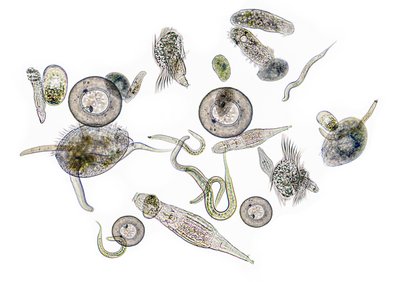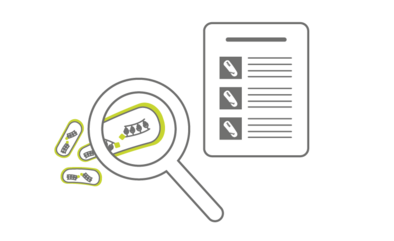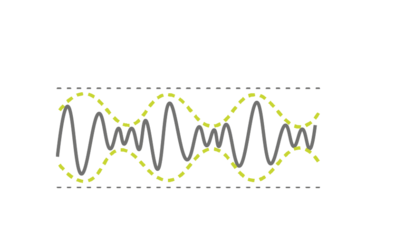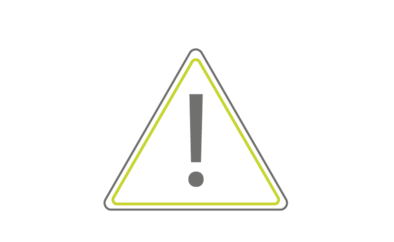Prevention of disturbances
Continuous direct monitoring of the wastewater biocoenosis is the required milestone.
Disturbances at the wastewater treatment plant
Employees at wastewater treatment plants are frequently confronted with disruptions in the ongoing plant processes. The most common disruptions are operational malfunctions. An operational malfunction is a temporary, allocatable and mostly technical disturbance with the consequence of a complete or partial failure of the cleaning process. Thanks to the state-of-the-art technology used today, the diagnosis of errors and the elimination of such malfunctions is almost completely automated.
Functional malfunctions, on the other hand, are disturbances of a sub-process where a complete or partial failure of the cleaning process does not occur immediately, but at a later stage. In the case of functional impairments at the nitrification step, for example, the performance of other processes (sludge/water separation, carbon degradation etc.) remains unaffected at first. To remedy this kind of disturbance is rather difficult and time-consuming.
Major malfunctions such as breakdowns or hazardous incidents are events that result from a failure in the cleaning process of a plant which, immediately or later on, lead to a serious danger for human persons and the environment. Breakdowns are usually caused by unauthorized discharges or chemicals.
Continuous monitoring
If sample analyses are only carried out selectively, e.g. when a problem has just occurred, these analyses provide insufficient data to achieve a lasting process optimization. Consistency in the analytical monitoring of microorganisms eliminates uncertainties, enables targeted action and promotes sustainable process optimization. This leads to more safety and active environmental protection.
Biocenosis in the spotlight
The biocenosis of wastewater treatment plants is the essential "motor" responsible for the purification performance. If it starts to stutter, functional disturbances can occur. Individual bacteria are rarely responsible for a malfunction, even if they are ultimately responsible for a disturbance, such as the formation of bulking sludge. Changes in the biocenosis as a whole are what precedes them nearly all the time. An isolated consideration of individual parameters is always insufficient. A holistic, direct and sustainable approach is essential for the success of corrective measures.

What should an optimal disturbance prevention strategy look like?
A disturbance prevention strategy that is based on primary parameters, i.e. microbiology, and thus is faster and more effective than conventional measures, always has to focus on direct monitoring of the biocenosis. If the focus is directed to the critical point, i.e. where the substances are converted, then this kind of biocenosis-based disturbance prevention is more reliable and successful than conventional methods. Operational safety is increased and the environment is protected.

1. Assessment of the status quo
First, the biocenosis has to be analyzed in as much detail as possible to ensure that its composition and the most important population groups are identified and quantified. This status quo analysis usually needs to be done only once a year or after interventions.

2. Monitoring
Based on the exact status quo, individual bacteria or entire groups of bacteria that are typical for this wastewater treatment plant can be selected. These indicator organisms are then analyzed regularly, preferably every two weeks, directly in the sample. Only direct microbiology allows an accurate evaluation of these primary parameters.

3. Modulation
As soon as changes in the biocenosis are detected that lie outside the defined biocenosis parameters, action must be taken. By intervention in the process control, the biocenosis is returned to the optimal pattern. It is important to monitor it closely and comprehensively in order to ensure that no new problems arise in other areas.
As soon as the biocenosis is optimized again, it is possible to switch back to the monitoring mode.

4. Intervention
Even regular monitoring does not always protect against externally caused disturbances. In this case, immediate measures must be taken. The new status quo of the biocenosis and the deviations from the target status have to be defined clearly and remedial measures have to be taken in order to restore the original status. Continuous monitoring of the biocenosis is necessary to ensure that interventions in the process engineering actually achieve the desired optimization. Once the intervention has overcome the disturbance, it is possible to return to regular monitoring.
Direct Microbiology
A biocenosis-based prevention of disturbances must always be based on direct methods. Only these can guarantee that the biocenosis can be analyzed quickly, specifically and comprehensively. The answer to the question "What's going on in my biocenosis?" can only be achieved with a direct identification and quantification of living bacteria. Visualization is specifically recommended in this case because it allows direct insight into the biocenosis of the plant.


